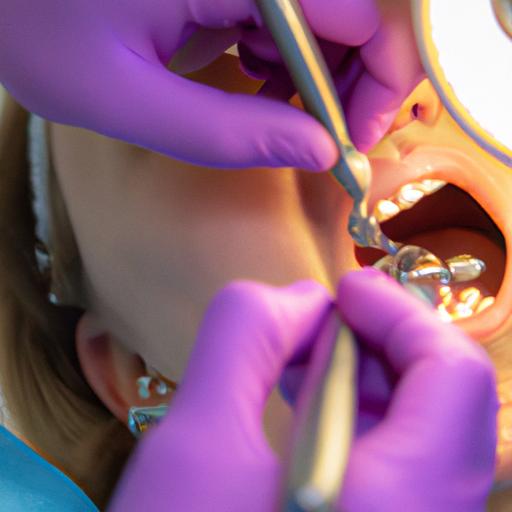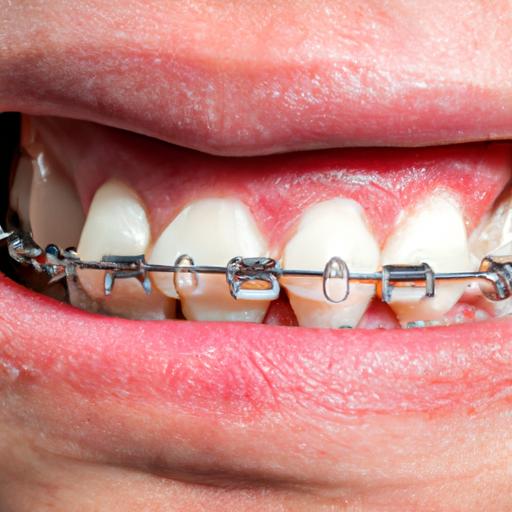
Discover the significance of stage 2 orthodontic treatment in achieving optimal dental alignment. Learn about key procedures and post-treatment care.
Introduction to Stage 2 Orthodontic Treatment
When it comes to achieving a beautiful and healthy smile, orthodontic treatment plays a crucial role. While many people are familiar with the initial phase of orthodontic treatment, known as stage 1 or early orthodontic treatment, it is equally important to understand the significance of stage 2 orthodontic treatment. In this article, we will explore the key aspects of stage 2 treatment and how it contributes to achieving optimal dental alignment.
Orthodontic treatment is typically divided into stages to ensure that the teeth are shifted into their desired positions gradually and effectively. Stage 1 treatment focuses on correcting significant bite issues and guiding facial growth in children. Once the initial phase is complete, stage 2 treatment takes over to fine-tune the alignment of teeth and ensure a perfect smile.

Orthodontist adjusting braces during stage 2 treatment
Key Procedures Involved in Stage 2 Orthodontic Treatment
Stage 2 orthodontic treatment involves a range of procedures tailored to meet the specific needs of each individual. Let’s take a closer look at some of the key procedures commonly performed during this stage:
1. Placement of Braces or Aligners
One of the most common methods used in stage 2 treatment is the placement of braces or aligners. Braces consist of brackets bonded to the teeth and connected by wires, while aligners are clear, removable trays that gradually shift the teeth into place. Both options apply gentle pressure to guide the teeth into their proper positions.
2. Use of Orthodontic Elastics or Rubber Bands
Orthodontic elastics, also known as rubber bands, are often utilized during stage 2 treatment to correct bite issues and align the jaws properly. These small rubber bands are attached to specific brackets on the upper and lower braces, exerting gentle force to bring the teeth and jaws into alignment.
3. Incorporation of Headgear or Functional Appliances
In cases where additional correction is needed, orthodontists may incorporate headgear or functional appliances as part of stage 2 treatment. Headgear is a device worn outside the mouth, utilizing the principle of anchorage to apply pressure and guide the growth of the jaws. Functional appliances, on the other hand, work to harmonize the relationship between the upper and lower jaws.
4. Other Supplementary Techniques, if Applicable
Depending on the unique needs of the patient, orthodontists may employ additional supplementary techniques during stage 2 treatment. These may include palatal expanders to widen the upper jaw, TADs (temporary anchorage devices) for more precise tooth movement, or other innovative approaches to achieve optimal dental alignment.

Patient adhering to treatment guidelines for successful stage 2 treatment
Factors Influencing the Success of Stage 2 Orthodontic Treatment
The success of stage 2 orthodontic treatment relies on several factors that should be taken into consideration. Here are some key elements that can influence the outcome of the treatment:
Patient Compliance and Adherence to Treatment Guidelines
Patient compliance and adherence to the orthodontist’s instructions are of utmost importance in stage 2 treatment. Regularly wearing aligners or braces as directed, maintaining good oral hygiene, and attending scheduled appointments are essential for achieving the desired results in a timely manner. It is crucial for patients to understand the significance of their active participation throughout the treatment process.
Timing and Growth Considerations
Timing plays a vital role in stage 2 orthodontic treatment. It is crucial to commence the treatment when the patient’s growth spurt is at its peak, as this allows the orthodontist to take advantage of the natural growth process to guide the teeth and jaws into their correct positions. A thorough evaluation of the patient’s growth pattern is necessary to determine the optimal timing for stage 2 treatment.
Challenges and Complications
While stage 2 orthodontic treatment aims to achieve optimal dental alignment, it is essential to acknowledge potential challenges and complications that may arise. These can include tooth or jaw sensitivity, discomfort during adjustments, or the need for additional procedures to address unexpected issues. Orthodontists closely monitor progress and make necessary adjustments to ensure the treatment stays on track.

Patient wearing retainers post stage 2 orthodontic treatment
Post-Treatment Care and Maintenance in Stage 2 Orthodontic Treatment
Once stage 2 orthodontic treatment is complete, it is crucial to maintain the results achieved. Proper post-treatment care and maintenance play a significant role in ensuring a stable and healthy bite alignment. Here are some essential guidelines to follow:
Maintaining Oral Hygiene
Whether wearing braces or aligners during stage 2 treatment, maintaining excellent oral hygiene is vital. Regular and thorough brushing, flossing, and rinsing help prevent plaque buildup and keep the teeth and gums healthy. Utilizing water flossers can also be an effective tool for cleaning hard-to-reach areas around braces or aligners.
Periodic Check-ups and Retainers
Following completion of stage 2 treatment, orthodontists typically recommend periodic check-ups to monitor the stability of the results. Additionally, wearing retainers as directed is crucial to prevent teeth from shifting back to their original positions. Retainers help maintain the achieved dental alignment over the long term, ensuring that all the hard work invested in stage 2 treatment pays off.
In conclusion, stage 2 orthodontic treatment is a crucial phase in achieving optimal dental alignment and a beautiful smile. By understanding the key procedures involved, considering the factors that influence success, and following proper post-treatment care, individuals can enjoy the long-lasting benefits of a perfectly aligned smile. If you are interested in learning more about orthodontic treatments, you may find our guide on early orthodontic treatment or generalized spacing orthodontic treatment helpful. Remember, a confident smile begins with a healthy bite!
Internal links:







